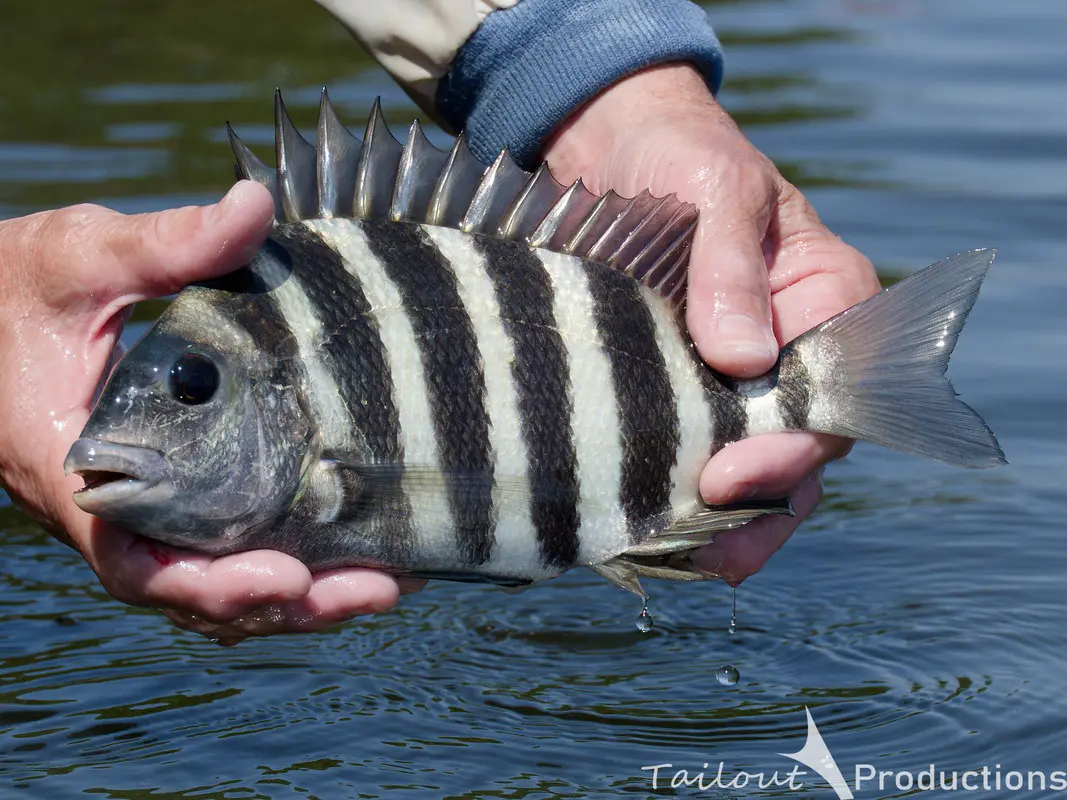Sheepshead: Stages - Spawning
Fishing Sheepshead Spawning

Overview of Sheepshead Spawning
Sheepshead spawning is a critical period marked by dramatic behavioral and physiological changes. During this time, sheepshead move into specific spawning areas and alter their feeding and mating behaviors. The spawning cycle can be broadly divided into three stages:
-
Pre-Spawning Phase:
During this initial stage, sheepshead begin to migrate toward known spawning grounds. They often congregate in shallow, sheltered areas such as estuaries and coastal flats. Their behavior is generally cautious; they are slowly increasing their activity as they prepare for spawning, focusing on feeding to build energy reserves. -
Peak Spawning Phase:
At the height of the spawning period, large groups of sheepshead gather in prime spawning areas. In these conditions, they are more aggressive in their feeding, actively courting mates, and engaging in competitive behaviors. The water in these zones is typically enriched with nutrients, which drives the abundance of prey. The increased activity and social interaction during this phase often result in more frequent and vigorous strikes. -
Post-Spawning Phase:
Following the peak, sheepshead gradually disperse as the spawning activity subsides. They tend to retreat into deeper or more structured areas to recover. Their feeding becomes more selective and measured, as they conserve energy after the intense spawning period.
Spawning Areas and Sheepshead Habitat
Sheepshead typically spawn in areas where there is a rich abundance of forage and ample natural cover:
-
Estuaries and Coastal Flats:
These shallow waters provide the perfect environment for spawning. The mix of salt and fresh water, combined with soft substrates, supports a high density of small crustaceans and invertebrates that serve as prey. -
Near Structures:
Natural and man-made structures such as docks, piers, and jetties often create localized channels and sheltered areas where spawning occurs. The areas around these structures can offer additional cover and help concentrate bait. -
Tidal Influences:
Tidal currents in these areas play a significant role. High tides often bring an influx of prey into spawning zones, while low tides can expose new areas for feeding and mating activity.
Behavior of Sheepshead During Spawning
-
Activity Levels:
During the peak spawning phase, sheepshead become highly active and aggressive as they compete for mates and food. In the pre- and post-spawning phases, they are more reserved and rely heavily on camouflage to ambush prey. -
Feeding Patterns:
At peak spawning, they engage in vigorous feeding on abundant crustaceans and small invertebrates, while during other phases, their feeding is more cautious and selective. -
Large Female Behavior:
Large females tend to occupy deeper or more structured areas within the spawning grounds. They are more selective in their strikes, requiring a subtle and refined presentation to trigger a response.
Targeting Sheepshead During Spawning
-
Baits and Rigs:
Live baits such as fiddler crabs and shrimp are highly effective for sheepshead in spawning areas. These baits should be rigged on a sliding sinker rig or the popular Fish Finder Rig, which keeps the bait near the bottom while allowing natural movement. -
Lure Options:
Jigs or Soft plastic lures that mimic small crustaceans can work well. Natural, subdued colors that blend with the substrate (such as sandy, brown, or green hues) are recommended.
Community and Expert Angler Tips
- Learning Through Video:
Watching detailed video tutorials can help refine your approach. Look for experts who specialize in fishing for Spawning Sheepshead to learn advanced techniques.
Click the thumbnail above to watch a detailed guide on fishing for Spawning Sheepshead
For more tips, check out "fishing Sheepshead Spawning tips" on YouTube
Popular Search Terms Related to Sheepshead Spawning
| Search Term | Thumbnail | Link |
|---|---|---|
| Sheepshead Spawning Techniques | Watch Video | |
| Best Live Baits for Sheepshead Spawning | Watch Video | |
| Sheepshead Spawning Retrieve Strategies | Watch Video | |
| Where to Find Sheepshead During Spawning | Watch Video | |
| Sheepshead Spawning Fishing Tips | Watch Video |
Explore Related Topics
Discover more articles to deepen your knowledge
Curating articles for you...
Create your own Research Page using AI
Try our AI assistant for free—sign up to access this powerful feature
